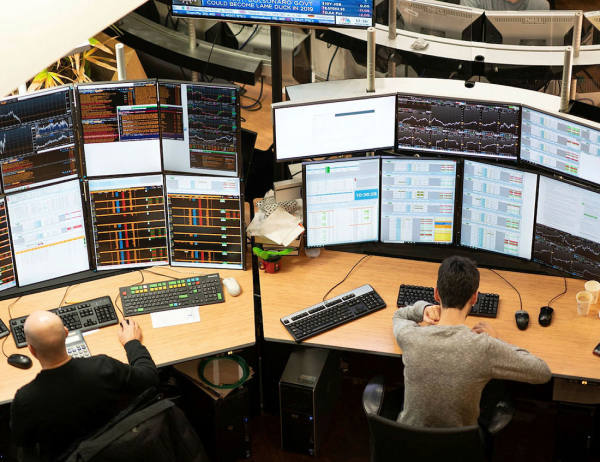A year ago, it looked as though our Genuine Growth screen had cracked. In the preceding 24 months, back-to-back refreshes had served to wipe out most of its long-term gains, culminating in a 75 per cent peak-to-trough drop in total returns in a little over two years.
Despite a much-improved run since last November, the episode has left me sceptical of the screen’s approach. In fact, at the risk of descending into Maoist self-criticism, the mixture of performance and stock selection has led me to conclude that the screen’s species of growth is more speculative than ‘genuine’, for reasons I shall discuss.
This might all seem a bit harsh. Against one very important metric – the screen’s benchmark – it is doing OK. Since we started following the screen in 2012, it has posted a headline total return of 111 per cent, versus 80 per cent from an even split of the FTSE All-Share and Aim 100 indices. That works out at about 6.4 per cent annually, which could be worse. What’s more, so long as we draw selections from both indices, it makes sense to compare them against the wider field, paltry as the returns from Aim may be.
However, as regular readers know, that isn’t the full story. While our screens are meant as a source of ideas rather than off-the-shelf portfolios, the Genuine Growth cumulative return drops to 75 per cent once a notional annual charge of 1.5 per cent is included to account for real-world dealing costs.

Can we blame Aim for the slump? While questions over its tax treatment have hurt sentiment in recent months, the junior market and its investors have faced difficult conditions for several years, as the heavy decline in the Aim 100 index since late 2021 makes clear.
Although this has muted the performance of the Genuine Growth screen’s benchmark, more worrying is the outsized contribution of Aim selections to the past three years’ performance. Since our 2021 refresh, junior market selections (four out of a total of six in 2021, three out of 10 in 2022 and two out of five last year) have produced a 60.7 per cent negative total return, against 39 per cent from the index. To put it bluntly, the Aim picks have been a disaster.
Trouble is, except for 2023’s main market picks, which posted a respectable 24.3 per cent total return, the Genuine Growth methodology hasn’t had much luck with the All-Share, either. Over three years, its picks have posted a 29.5 per cent negative total return, some 47 percentage points adrift of the index.
| Name | TIDM | Total Return (20 Nov 2023 - 14 Nov 2024) |
| Marks & Spencer | MKS | 46.5 |
| Standard Chartered | STAN | 46.2 |
| Intermediate Capital | ICP | 38.7 |
| Volex | VLX | 15.0 |
| Rathbones | RAT | 5.6 |
| Frasers | FRAS | -15.3 |
| YouGov | YOU | -55.1 |
| FTSE All-Share | - | 12.2 |
| FTSE Aim 100 | - | 3.8 |
| Genuine Growth | - | 11.7 |
| source: LSEG | ||
Might this year’s crop fare any better? Tempted as I am to omit Aim 100 shares from the screen’s focus – if only to try to improve returns – the truth is that the screen sets a high bar for both markets. Smaller companies, including the largest on Aim, are usually better positioned to meet its various asks.
And while the performance of the past three years might in other circumstances be enough to walk away, I think there’s value in tracking the Genuine Growth screen until at least late 2025. It’s important to remember that not every screen has to be a success to be valuable; the fact that this one leans heavily into the validity of earnings forecasts, growing analyst optimism, and the ability of companies to sustain above-average growth rates is useful, if only to test those assumptions.
Clearly, asking for a lot from future growth, while ignoring market caution – as expressed by a low price/earnings growth (or PEG) ratio – hasn’t been a winning strategy in the past few years. But it was for much of the period between 2012 and 2021, and may be again. Here, then, are those tests in full:
■ Both a three-year EPS compound annual growth rate (CAGR) and a forecast growth rate for the next two reporting years of 15 per cent or more.
■ Forecast EPS growth rate for the next financial year (FY+2) at least half the rate forecast for the current financial year (FY+1), or more than 10 per cent in each year.
■ EPS forecasts higher today than they were three months ago.
■ A PEG ratio among the lowest half of index constituents (either FTSE All-Share or Aim 100).
This year, three stocks from the Aim 100 and five from the FTSE All-Share indices passed all tests.
Of the main market picks, three (Standard Chartered (STAN), Barclays (BARC) and Bank of Georgia (BGEO)) hail from the same sector, while a further two (Secure Trust Bank (STB) and fellow Georgian lender TBC Bank (TBCG)) narrowly missed out on the earnings growth test. Clearly, the screen likes bank stocks right now. But why is this?
Let’s take the tests in turn. Clearly, the higher interest rate environment of the past three years has helped to push up lenders’ interest income. For Barclays and StanChart, chunky buyback programmes have helped to narrow share counts and lift earnings at the per-share level; in both cases, expectations are high that investment banking will return with a vengeance in the next couple of years, which explains both the high and rising analyst estimates.
All the while, despite the precipitous run-up in consensus forecasts and share prices, investors remain cautious of a sector that has disappointed many times before. Were it otherwise, it’s unlikely the three banks would have an average PEG ratio of 0.3, which implies huge doubt about either the sustainability of near-term earnings growth, the chances of market consensus forecasts being realised, or both.
On the plus side, the screen has at least avoided those lenders – Secure Trust, Lloyds (LLOY) and Close Brothers (CBG) among them – that are currently mired in the sector’s car finance mis-selling crisis. What’s more, our picks’ outsized exposure to non-UK economies (including a booming Georgia, an increasingly libertarian US, and the pick of the Asia and the Middle East) are important points of separation in an increasingly differentiated sector.
Details of all three banks, plus the other five stocks are included in the table below, while a longer list with fundamentals can be downloaded here.
| Name | TIDM | Mkt Cap | Net Cash / Debt(-)* | Price | Fwd PE (+12mths) | Fwd DY (+12mths) | FCF yld (+12mths) | FCF yld | PEG | Op Cash/ Ebitda | EBIT Margin | ROCE | 5yr Sales CAGR | 5yr EPS CAGR | Fwd EPS grth NTM | Fwd EPS grth STM | 3-mth Mom | 12-mth Mom | 3-mth Fwd EPS change% | 12-mth Fwd EPS change% | Index |
| Standard Chartered | STAN | £22,922mn | -£44,971mn | 939p | 7 | 3.1% | - | - | 0.4 | - | - | - | 12.3% | 44.2% | 14% | 20% | 27.9% | 49.6% | 9.5% | 16.1% | FTSE All-Share |
| Currys | CURY | £895mn | -£907mn | 79p | 8 | 1.4% | 6.1% | 5.1% | 0.3 | 24% | 2.1% | 5.5% | -4.0% | - | 15% | 10% | -2.0% | 61.6% | 6.3% | 20.4% | FTSE All-Share |
| Barclays | BARC | £37,122mn | £180,992mn | 257p | 6 | 3.6% | - | - | 0.4 | - | - | - | 12.3% | 24.2% | 17% | 21% | 15.8% | 85.3% | 7.0% | 23.5% | FTSE All-Share |
| Bank of Georgia | BGEO | £2,194mn | -£1,300mn | 4,925p | 4 | 6.1% | - | - | 0.2 | - | - | - | 19.3% | 24.6% | 15% | 23% | 20.6% | 45.9% | 5.8% | 38.4% | FTSE All-Share |
| Foresight | FSG | £517mn | £37mn | 447p | 10 | 6.0% | - | - | 0.4 | 117% | - | 39.6% | - | - | 33% | 20% | -10.4% | 4.2% | 1.5% | 8.4% | FTSE All-Share |
| Advanced Medical Solutions | AMS | £458mn | £45mn | 211p | 17 | 1.4% | 3.8% | -5.1% | 1.6 | 57% | 16.0% | 8.0% | 4.2% | -7.0% | 16% | 15% | -13.7% | -0.7% | 1.4% | 20.5% | Aim 100 |
| Griffin Mining | GFM | £271mn | £51mn | 148p | 10 | - | 9.5% | 8.8% | 0.3 | 114% | 21.1% | 9.2% | 9.6% | -10.3% | 24% | -38% | 24.4% | 73.1% | 11.6% | 155.3% | Aim 100 |
| Tatton Asset Management | TAM | £430mn | £27mn | 710p | 24 | 2.9% | 2.7% | 2.3% | 1.8 | 96% | - | 40.8% | 16.0% | 19.7% | 15% | 13% | 2.9% | 44.9% | 7.7% | 26.7% | Aim 100 |
| Source: FactSet. * FX converted to £. NTM = Next Twelve Months. STM = Second Twelve Months (i.e. one year from now) | |||||||||||||||||||||

.jpg?source=invchron&width=608)


.jpg?source=invchron&width=600)




